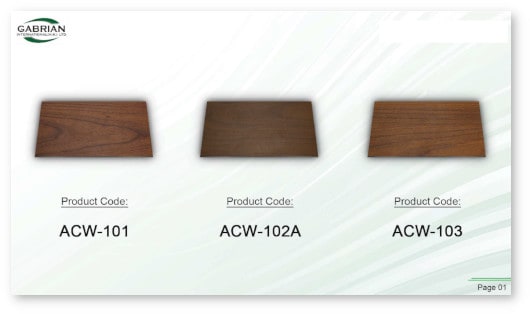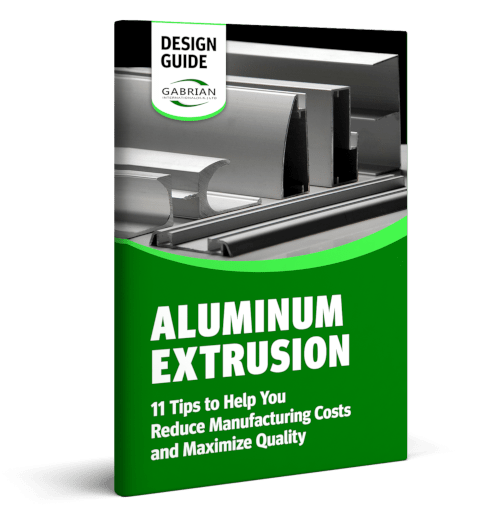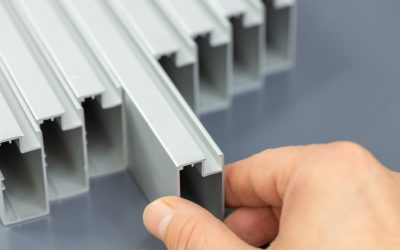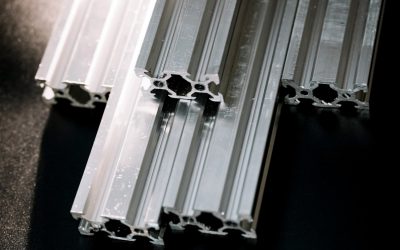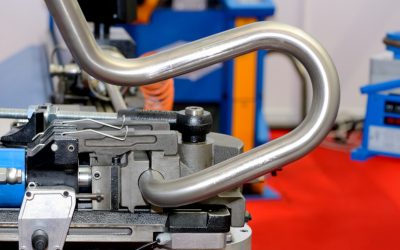Humans have used wood as a building material for thousands of years. While many newer building materials exist in modern times, people still value wood for its warmth, elegance, and timeless appeal.
In recent decades, we’ve seen the increased use of aluminum and new finishing options. You can even finish your aluminum to look like wood, and many companies are using wood grain aluminum to make their furniture and architectural products more appealing.
Are you considering wood-look aluminum finishing for your product? If so, you might wonder how coating specialists apply the wood grain pattern and how this finish compares to real wood or other aluminum finishes.
Here you will learn about the finishing processes and explore the advantages and disadvantages of wood look aluminum.
Table of Contents
The Process of Adding a Wood Grain Pattern to Aluminum Extrusions or Sheet
The aluminum extrusion and rolling processes are great for creating architectural and furniture products. Manufacturers use them to make windows, doors, decking, gates, railings, cladding, ceilings, chairs, tables, step ladders, crowd control stanchions, and more.
After the manufacturer has produced the aluminum sheet metal or extrusions, the product now needs to undergo wood grain finishing. Two key processes create this effect — the first is powder coating, and the second is sublimation.
Process #1: Powder Coating
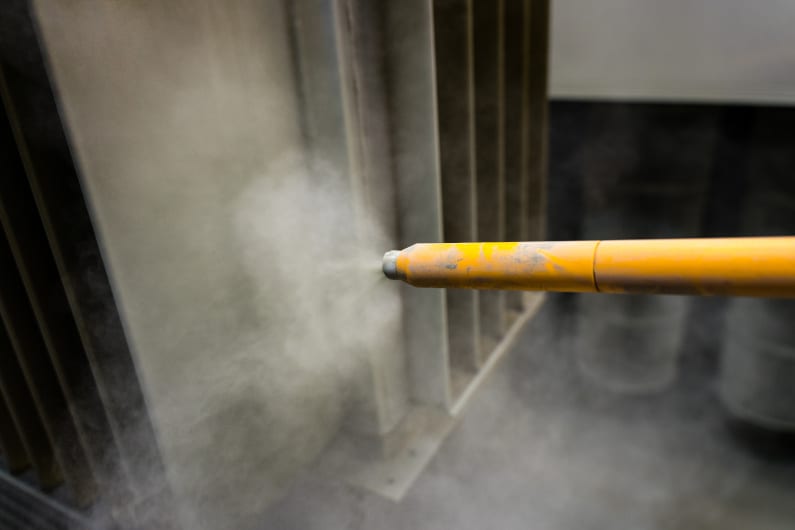
The powder coating process involves the following:
- Surface Preparation – Coating technicians ensure that the surface is free of contaminants and ready for coating.
- Base Coat – They apply a base coat of powder, which is electrostatically charged to enhance adhesion.
- Curing – The specialists place the product in a curing oven. Typically it stays there for 10-15 minutes at around 200 degrees Celsius.
- Cool Down – They remove the product from the curing oven and allow it to cool down.
Once the aluminum product is fully cooled, it’s time for the sublimation process.
Process #2: Sublimation
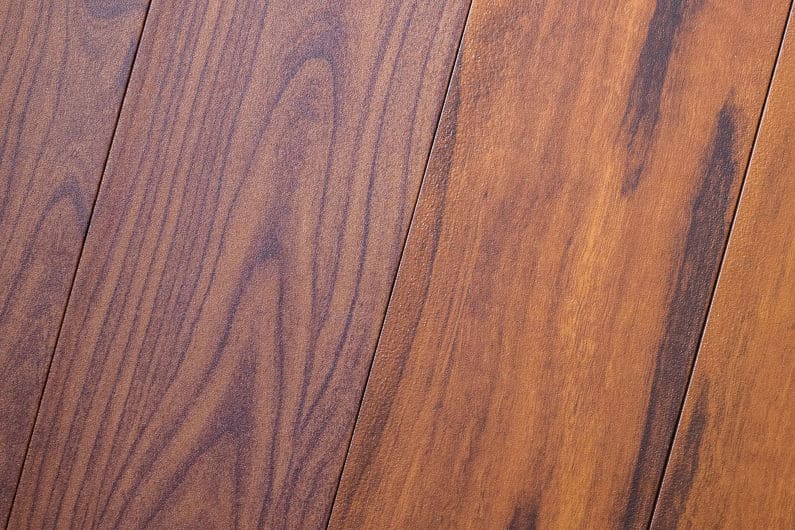
The sublimation process involves the following:
- Film Wrapping – Coating specialists wrap a film with the decorative pattern (in this case, wood grain) around the aluminum product.
- Air Removal – They remove all air from the space between the film and the aluminum product. This way, the film stays firm against the powder coat layer.
- Curing – The technicians place the wrapped extrusions or sheet into a curing oven. The wood grain pattern gets transferred from the film to the coated surface as they heat up.
- Cool Down – They remove the product from the oven and remove the film. At this point, the pattern has been fully transferred.
After the product cools down completely, it is ready for packaging and shipping.
See a Video of the Decoral System
The process described above follows the Decoral System, which our coating specialists in India use to apply the aluminum wood finish. Here is a video showing the process:
Now that you have seen the process in action, you may be curious about how wood grain aluminum extrusions and sheet compare to other options.
What are the Pros and Cons of Wood Grain Aluminum?
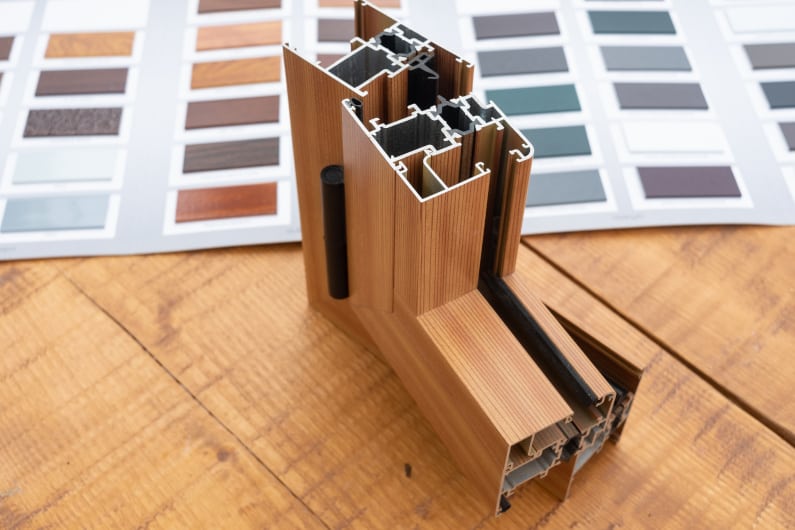
Compared to real wood or other aluminum finishes, various advantages and disadvantages exist.
Advantages Vs. Natural Wood
- Durability: Compared to natural wood, aluminum is highly durable — it’s resistant to weathering, rot, and decay.
- Maintenance: It is low maintenance and does not need to be regularly stained, sealed, or painted.
- Consistency: There is no need to worry about split wood, splinters, posts being the wrong size, or glue seam issues when you receive a shipment.
- Customization: As a designer, you have additional flexibility to customize the part and can choose from many different wood grain patterns.
- Environment: Producing the material does not lead to potential deforestation, and aluminum is recyclable.
Disadvantages Vs. Natural Wood
- Authenticity: Aluminum is not the genuine organic material, and product users may prefer the feel of the real thing if they are handling it up close.
- Biodegradability: Unlike real wood, aluminum will not break down naturally, and wood can be sustainable if it is sourced from responsibly managed forests.
- Repairability: When real wood gets damaged, it can be sanded, repaired, and refinished to restore it.
How Does Wood-Look Aluminum Compare to Other Finishes?
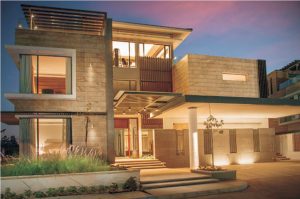
Compared to other finishes, the most obvious advantage of wood grain aluminum is its wood-like appearance. It is a good option if you are trying to create a natural look for your architectural or furniture product.
Since the first part of the finishing process involves powder coating (as discussed above), the characteristics of the finish are similar to regular powder coat. For example, it enhances aluminum’s corrosion resistance, and the coating does not release VOCs (volatile organic compounds).
Regarding fading over time, aluminum wood look extrusions or sheet can be specified to meet AAMA, Qualideco, and Qualicoat standards. As such, you can be confident that your product will maintain its appearance for years.
If you want your product to look like wood but have the properties of aluminum, this finish is a clear choice.
Work With Gabrian International
Do you need help producing your wood-look extruded aluminum or sheet in Asia? Learn more about our aluminum extrusion services or our options for rolled aluminum, and reach out if you have any questions.
You can also take a look at our catalog of aluminum patterns below.

